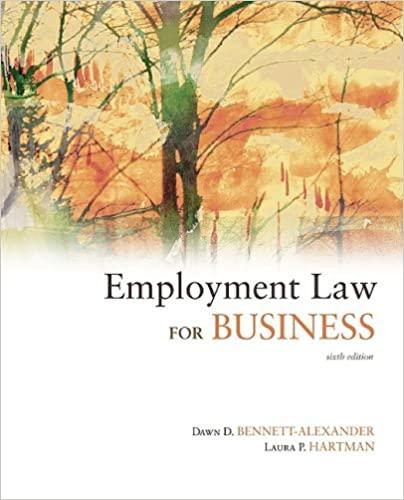Answered step by step
Verified Expert Solution
Question
1 Approved Answer
Yonsei University International Summer School Law and Economics Assignment 2 (Due July 12 in class) 1. Mr. Smith can cause an accident, which entails a
Yonsei University International Summer School Law and Economics Assignment 2 (Due July 12 in class) 1. Mr. Smith can cause an accident, which entails a monetary loss of $1000 to Ms. Adams. The likelihood of the accident depends on the precaution decisions by both individuals. Specifically, each individual can choose either \"low\" or \"high\" precaution, with the low precaution requiring no cost and the high precaution requiring the effort cost of $200 to the individual who chooses the high precaution. The following table describes the probability of an accident for each combination of the precaution choices by the two individuals. Adams chooses low precaution Adams chooses high precaution Smith chooses low precaution 0.8 0.7 Smith chooses high precaution 0.7 0.1 1) (i) Construct a table indicating the social expected loss corresponding to each combination of precaution choices by the two individuals. (ii) What is the socially efficient combination? 2) Suppose now that the court adopts \"strict liability\" in which the defendant (Mr. Smith) bears the entire liability when a lawsuit follows the accident. (i) Construct a table describing the individuals' payoffs under different precaution pairs. (ii) Find the equilibrium precaution choices by the individuals. 3) Consider the simple negligence rule. Is there a precaution standard that will induce both agents to choose the high precaution? [Hint: The precaution standard should be either \"high\" or \"low\".] Construct a payoff table for both individuals under the optimal \"precaution\" standard and find an equilibrium. 2. Consider a unilateral care accident model in which the injurer can either take care at a cost of $50, or no care. Further, suppose that if he takes care, there is zero risk of an accident, but if he does not take care, the risk is 0.1. Finally, suppose the victim's damages in the event of an accident are $750. Use the Hand rule to determine if care is efficient in this case
Step by Step Solution
There are 3 Steps involved in it
Step: 1

Get Instant Access to Expert-Tailored Solutions
See step-by-step solutions with expert insights and AI powered tools for academic success
Step: 2

Step: 3

Ace Your Homework with AI
Get the answers you need in no time with our AI-driven, step-by-step assistance
Get Started


